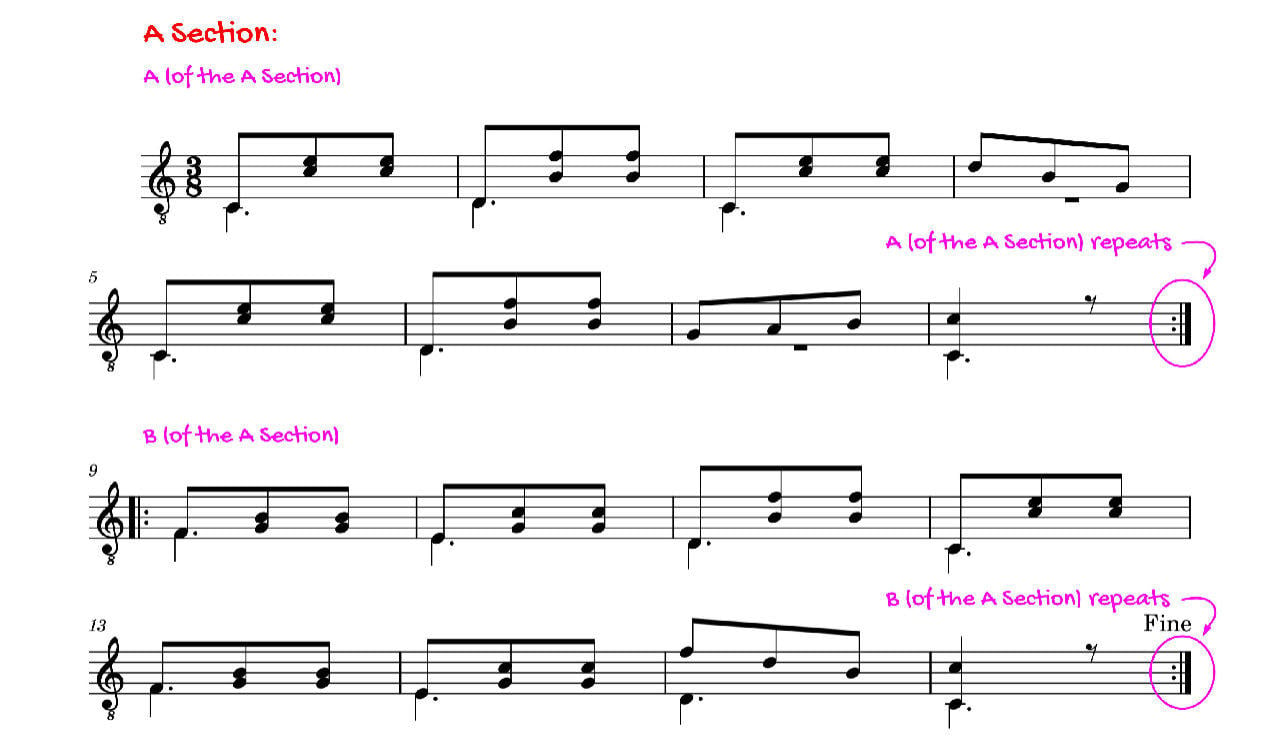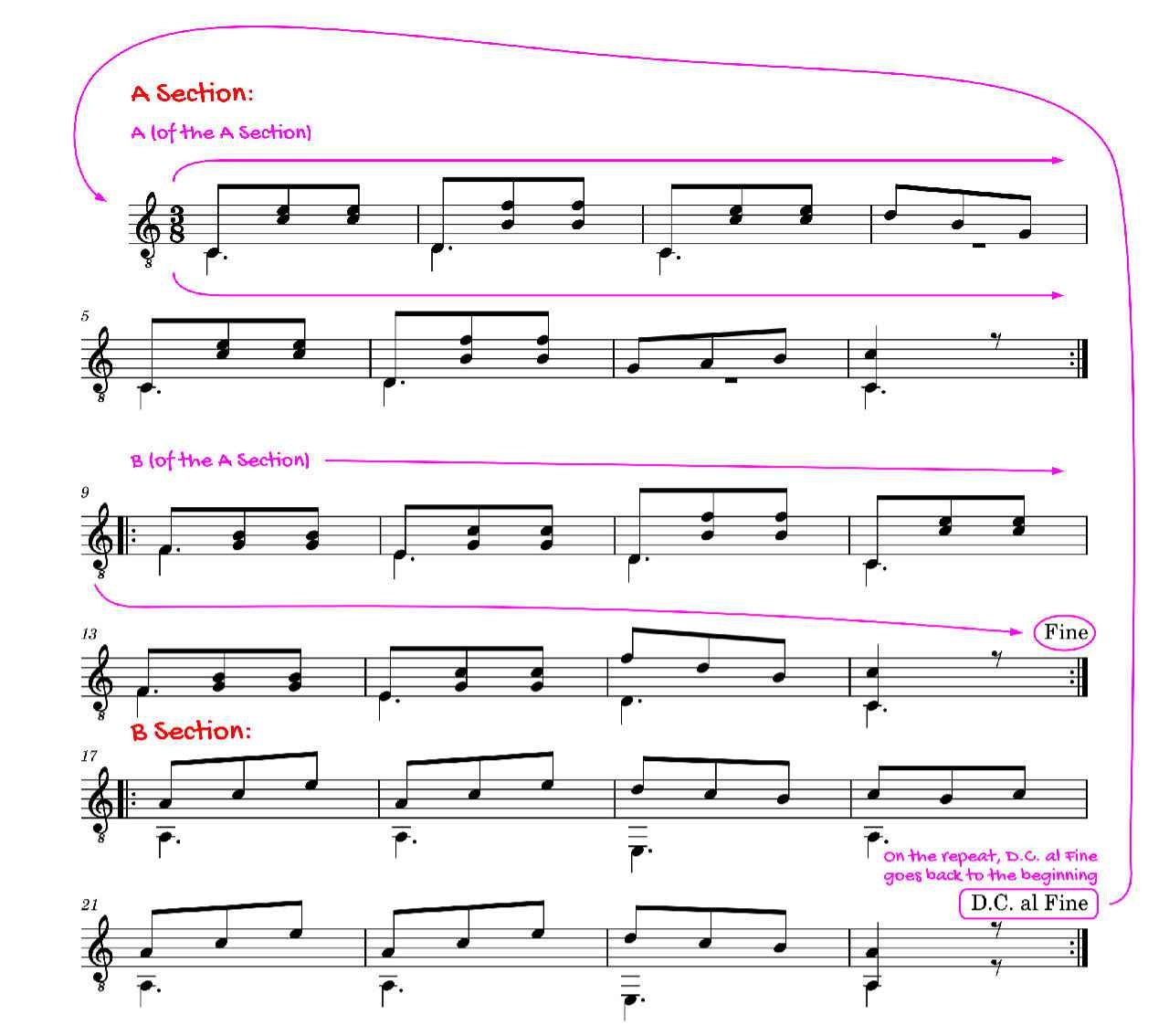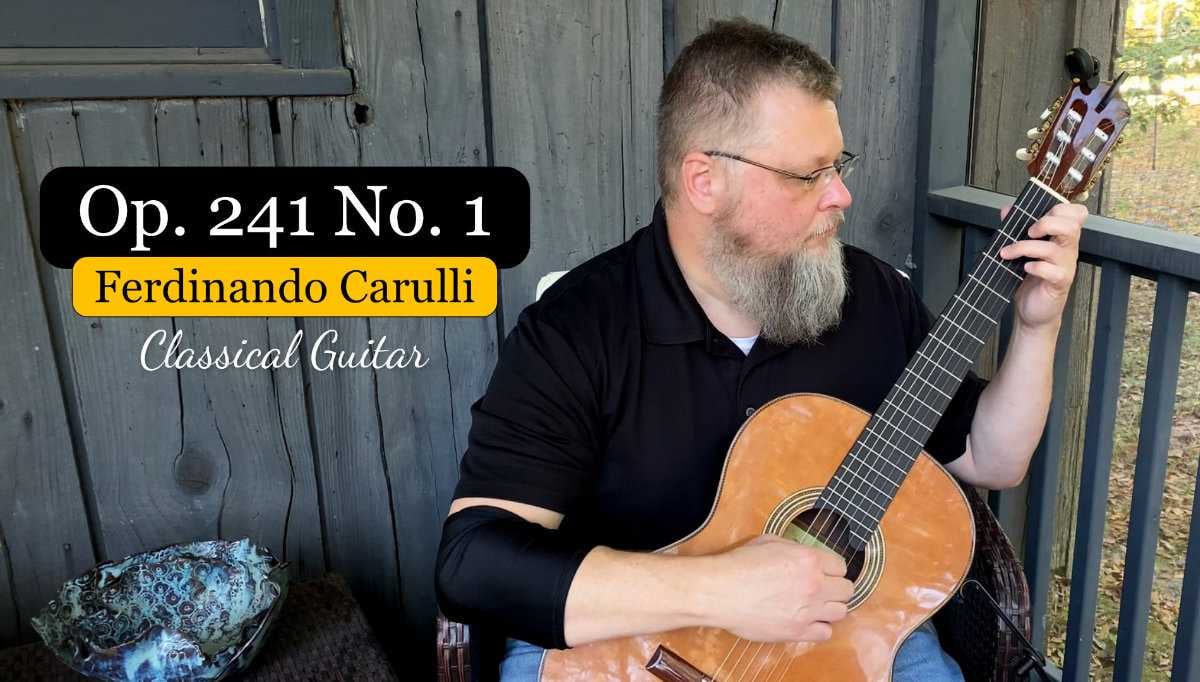This article looks at the first piece in Ferdinando Carulli’s Opus 241. We will analyze the piece and create a canvas for composing classical guitar music.
The Composer
Ferdinando Carulli, who lived between 1770 and 1841, was a prolific composer creating over 400 works for the guitar. His full name was Ferdinando Maria Meinrado Francesco Pascale Rosario Carulli. Carulli started on the cello at a young age. However, when he turned twenty, the allure of the guitar caught his eye. Since there were no professional guitar teachers to learn from, he taught himself and developed his own technique.
He started composing while living in Milan. Eventually, he moved to Paris, the music capital of the world at his time. He published most of his pieces in Paris. Something I find interesting was that later in life he would self-publish his music. Many people self-publish work these days thanks to the internet.
One of his most famous works is his Method, Opus 27. It went through 4 revisions and eventually a major revision, now titled Opus 241. This is the first piece (No. 1) from that method (you can watch the video here and download the sheet music here):
The Structure of Carulli’s Opus 241
Carulli’s Op. 241 No. 1 is a simple waltz written in C major. The original scan says that it is written in 6/8, however, it looks more like 3/8. The piece is in Ternary form. Basically, it has three sections. An “A” section that contains two sections (an “a” and “b”). Each section repeats. Then it has a “B” section in A minor which repeats. After the “B” section finishes the D.C. (D.C. al Fine) sends the player back to the beginning to play to the Fine, hence the turn. The whole structure looks like this A (a, b) – B – A (a,b). Make sense? How about a visual?
The A Section contains an “a” and “b” section of its own. Both sections repeat themselves:

Carulli’s Opus 241 Number 1 Section A
Then the B section plays and repeats itself:

Carulli’s Opus 241 Number 1 Section B
After playing the B section’s repeat, the D.C. al Fine sends the player back to the beginning. The player then plays from the beginning until they reach the Fine without playing the repeats:

The Chords of Carulli’s Opus 241
Now let’s look at the chords used in the piece. Why do this? First, it has a lot to do with understanding how the piece is written. How Carulli approached writing it. If this is your first time analyzing a piece, you might be shocked. The piece is based on the I-IV-V chord progression much like many pop songs of today. Actually, it is an I-V chord progression.
Since the A part of the A section is in the key of C major, the C major chord appears first. Then a B diminished chord in the first inversion. And to finish off the first four bars: another C major and a G major chord:

Woah, Wait A Minute
Woah, wait a minute Mr. Pauly guitar man. You said that the chord progression was I-V. That I did my musically observant friend. The one (I) chord in the key of C major is, of course, a C major (C-E-G). The five-chord is a G major (G-B-D). So, where does the B diminished come in?
It is a substitution for the five (V) chord. Cool huh? We can use chord substitutions to change things up in an I-IV-V chord progression. This makes the music more interesting. This chord progression repeats itself in bars 5-8. The section repeats and we are on to the B part of the A section.
In the B part of the A section, the chords are reversed (V-I). And again, we see the B diminished (in the first inversion, with a kung-fu grip) in the third bar:

However, this time Carulli has thrown us a curve ball. He places a V7 chord inversion. That is the F that makes the G chord a 7th chord in the bass. Then on to the one (I) chord in the first inversion (E in the bass). Then, again, we have the B diminished chord, first inversion, as a substitute for the G chord. Finally, we land back home on the C chord. This chord progression repeats itself in bars 13-16.
Now Entering the B Section
Now we enter the B section. The daunting A minor section. Again Carulli uses the i-V7 chord progression, but this time there are no chord substitutions as in the A section. Just a note here: the 7th note, which is called the leading tone is raised up a half-step (semitone). This forms the harmonic minor scale. The harmonic minor scale applies to… the harmony… in a minor key… okay, I’m done.
So, basically, we have A minor and E major 7:

Bars 21-24 repeat the same chords and the B section repeats. Now we have an analyzed piece of music. What now? What did we gain by going through this process? May I suggest a few things?
What Do We Have Now?
We have seen what elements Carulli used to create a piece of music. The piece is in 3/8 and in the key of C major. The B section has been written in the key of A minor. It has been written in ternary form, which is an A section and a B section. The A section has its own A part and B part. The player plays through a D.C. al Fine, going back to the beginning and playing to the Fine.
We have analyzed the chords and found Carulli using the I-V and a V-I chord progression with a diminished VII. This diminished VII chord substitutes the V chord in the key and occurs in the A section. The B section has an i-V7 chord progression which is common in minor keys.
So, to answer the question, we have a canvas.
A Carulli’s Opus 241 Composer’s Canvas
Like an artist who uses a canvas to paint. We now have a canvas to create our own pieces of music. To do this, erase all the notes on the staff lines. Keep the length of the piece, the time signature, and the chords. If you are using the Roman Numeral Analysis, you can easily change keys if desired. Make this a template and set it to the side for later pieces. Copy the template and start composing.
Now you have a starting point, a canvas, to develop your own piece of music. Depending on your knowledge of music theory you can alter the canvas in a multitude of ways. What will you do? What musical masterpiece will you create?
For me, I have written Ms. Miriam’s Waltz. I hope to debut this piece soon, but it still needs to be finished. So, again, what will you create?
If you like this blog post, you should sign up for the monthly newsletter and consider sharing it.




Comments ()